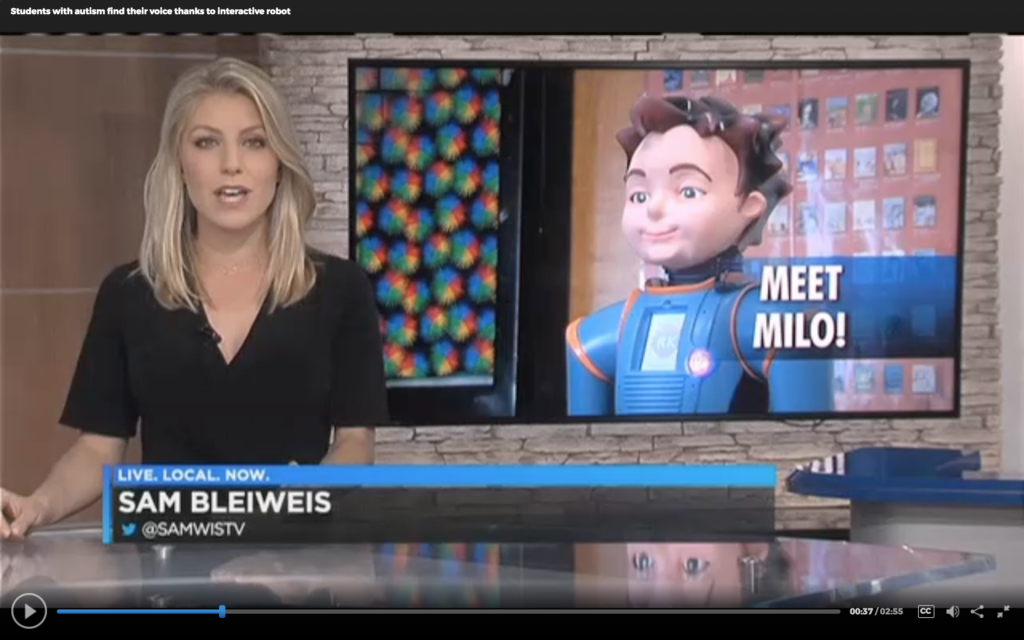By: Samantha Bleiweis
LUGOFF, SC (WIS) – For kids with Autism Spectrum Disorder (ASD), the simplest of social interactions can be difficult. But, Lugoff Elementary in Kershaw County is one of several schools in 15 districts across South Carolina piloting a new program to help bring those kids out of their shells and teach them the basics of emotions and social interactions.
“Socialization is a very hard thing,” said Lynn Looney, who teaches children with autism at Lugoff Elementary. “They’re very literal and they don’t always understand emotions and facial expressions so Milo has been a wonderful tool to teach them that.”
The “Milo” she’s referring to – is a robot! He models facial expressions and explains different social scenarios to kids with autism while walking them through modules and lessons.
“Higher level students are able to use the techniques,” Looney said. “And they’re able to say ‘I’m using Milo’s techniques to calm down.’”
Carrie Watson has two children at Lugoff Elementary. Her oldest, Jacob, is 11 years old and in Looney’s class. Her other son, Colby, is 7 years old and in the first grade. Both of her boys have autism.
“Colby’s biggest thing is interacting with friends, space… the volume is a huge barrier for him,” Watson said. “When Milo was introduced I’ve noticed him wanting to grow and greet friends, talking about keeping the space, talking about what’s a good choice with friends, what’s not a good choice with friends.”
The South Carolina Department of Education launched a statewide three-year pilot of RoboKind’s Robots4Autism program in the fall of 2017.
Kershaw County School District is one of 15 districts piloting the program.
WIS caught up with Colby as he worked through a greeting module with Milo. Milo would show Colby different scenarios and ask which greeting was appropriate for each scenario. Milo can also walk and show other aspects of social interactions – like the appropriate amount of space.
“He helps us,” Colby said. “Space means you don’t have to be too far away… you have to be medium. Not too close.”
Carrie said Milo has helped both her boys – even with their differing levels of language barriers.
“The huge thing with children on the spectrum is their language barrier. A lot of them have a hard time communicating,” Watson said. “People who don’t understand autism don’t understand that’s a hard part for them. Having something like this is opening that door for them because their brain functions differently from a neurotypical child.”
The program serves 8,000 students statewide. Watson said she hopes the program continues to help these kids find their voices – showing the rest of the world what she and so many other parents already hear, see and feel from their own kids.
“They have more love to give than anything,” Watson said.
Click here to learn more about Milo.
To view the article click here.
